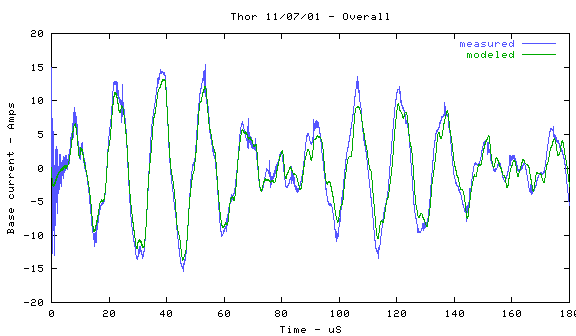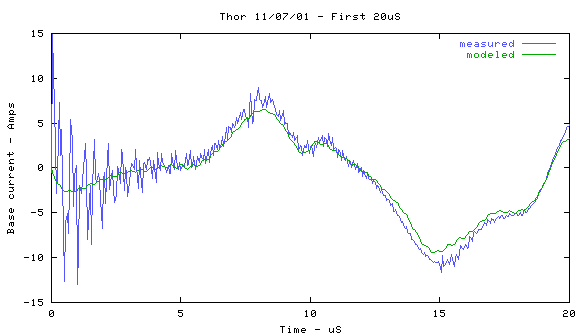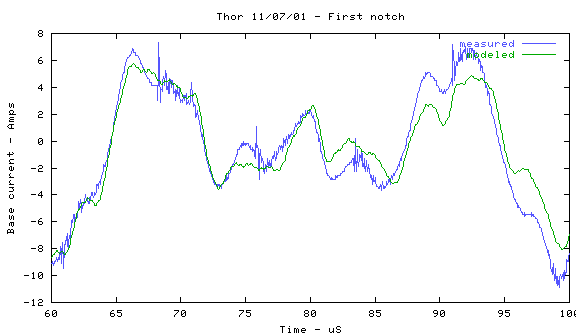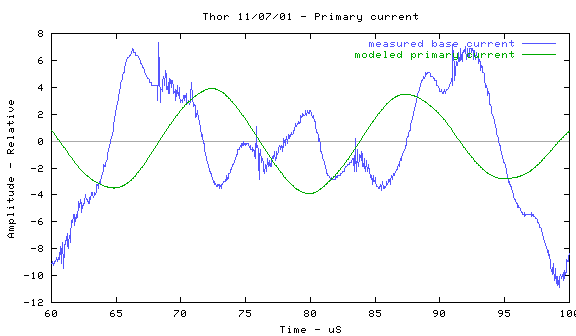
The initial burst of ringing in the base current, which contains frequency components of 1.92Mhz, 2.09 Mhz, 5.68Mhz, 7.26Mhz, (all +/- 50kHz) is un-modeled and presumably caused by spurious resonances in the primary circuit. The pattern suggests the resonance of a distributed structure, possibly the primary itself, but we'll not consider this further.
The graph below expands the first 20uS, and we can see that the prediction of the initial mode 3 (3/4 wave) amplitude and phase is about right.

Looking at the first base current notch, from 60uS to 100 uS, we still see good agreement with the mode 3 component, although the predicted phase has started to shift, due to slight error in the determination of the mode 3 frequency.

By the second notch (below), mode 3 has accumulated about 90 degrees of phase error, and from here onwards, the predicted phases of the higher modes is effectively random.

The graph below, which makes use of an additional recording from an E-field pickup, shows that little of the higher mode excitation appears at the top of the coil, either predicted or measured.

The diagram below shows the measured base current against the predicted primary current. At this point in the beat cycle the primary current is at its highest and we can see the primary gap re-igniting at each zero crossing of the primary current. This helps to confirm that the model has correctly established the relative phase of primary and secondary currents.

Finally, we look at a spectral analysis of the measured and modeled waveforms. We find good agreement with the frequencies and initial amplitudes of the higher modes, although in the real coil, the higher modes seem to be decaying rather more rapidly than predicted - no doubt due to our use of a naive model of coil losses.
